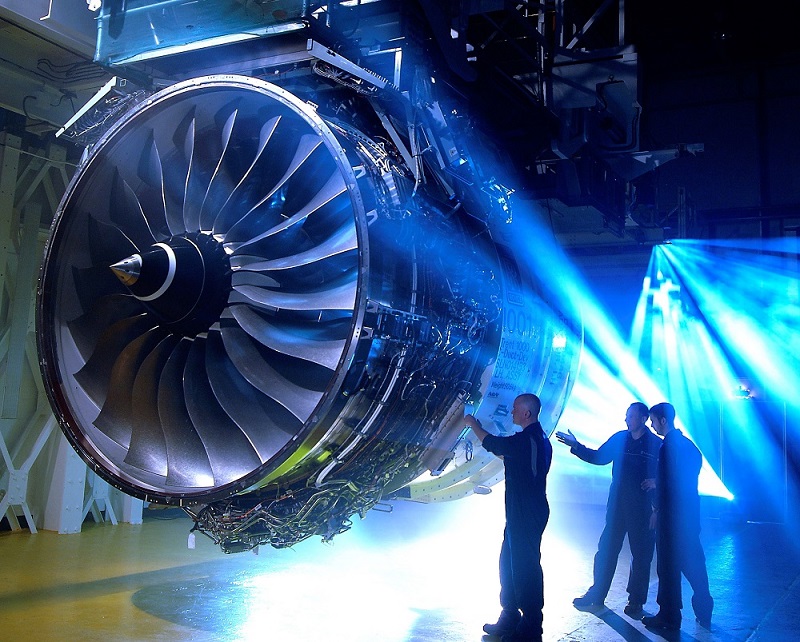It’s been a thorn in the side of for Boeing 787 Dreamliner operators around the world but an end may be in sight for the Rolls-Royce engine problems that have seen aircraft grounded and their range restricted.
Rolls-Royce has begun installing redesigned Trent 1000 intermediate pressure compressor blades after they were certified by the US Federal Aviation Administration and European Aviation Safety Agency in late December.
It says it expects the number of planes on the ground to reduce progressively in 2019 and for flight restrictions to be lifted on aircraft with engines fitted with the new blades.
Airlines affected by the engine problems include British Airways, Virgin Atlantic, Air New Zealand, All Nippon Airways and Norwegian Air Shuttle.
The problem has been costly and disruptive, affecting not just for the airlines but for their passengers.
AirNZ revealed in January that schedule changes prompted by the Trent 1000 issues would cost it $NZ30 to $40 million in fiscal 2019 and has repeatedly apologized to its customers about the impact.
READ Air New Zealand cuts profit guidance, capacity growth.
Introduction of the new blades will take place on “a phased basis” as production ramps up, according to the engine-maker.
The redesigned IP compressor blades are destined for a variant of the Trent 1000 known as Package C.
They address a problem which could see blades vibrate under certain conditions and crack.
The FAA issued an airworthiness directive in April 2018 after there were several failures of Package C engines and numerous reports of engines inspections finding cracked blades.
The problem prompted the FAA to reduce the Extended Range Twin Engine Operational Performance Standards ( (ETOPS) requirement, which determines how far a plane can travel from a suitable emergency airport, from 330 minutes to 140 minutes.
According to the FAA, Rolls-Royce determined that intermediate pressure compressor stage 2 blades had a resonant frequency that was excited by airflow at high thrust settings under certain temperature and altitude conditions.
The vibration caused by this could result in cumulative fatigue damage and blade failure.
The FAA was particularly worried about a single-engine shutdown. It feared that remaining powerplant would have to operate at maximum continuous thrust for a prolonged period, exacerbating the vibration issue and increasing the likelihood that the second engine might fail.
The ETOPs reduction came shortly after the FAA and EASA had significantly reduced the number of take-off and landing cycles aircraft powered by Package C engines could perform between inspections.
Rolls-Royce has Package C engines on 170 aircraft and has been fast-tracking the redesigned blades since the middle of last year when the first versions were installed on a test engine at its plant in Derby, in the UK.
It has also tested them on its flying test bed aircraft in the US and was confident enough in the results to start manufacturing them ahead of certification.
“As testing proved the design, Rolls-Royce began making new sets of blades, ready for introduction, in anticipation of regulatory approval,’’ the company says on its website.
“The introduction of the new Package C blade is part of a broader Rolls-Royce range of activities to reduce disruption to our customers, including expanded service capacity, reduced turnaround times, development of innovative inspection techniques, and accelerated new part introduction.”
The company says it is also confident it will be able to introduce new blades for two other Trent 1000 variants, the earlier Package B and newer TEN engines.
However, the cracking compressor blade was not the only problem with the Trent 1000.
It had an earlier issue with sulphidation on intermediate pressure turbine blades.
Sulphidation causes the blades to corrode and is caused by pollutants in the air that react at high temperatures.
The company addressed this with a new blade design featuring a protective coating and says about three-quarters of the fleet has now been upgraded.
A third problem involved high-pressure turbine blades that deteriorated earlier than expected.
A new blade design aimed at fixing this was made available in October 2018.
“Those were essentially the three issues and all have happened at the same time, making it more challenging to resolve,’’ the manufacturer says.
“This has caused disruption to our valued customers, which we sincerely regret. Rolls-Royce remains committed to providing the best powerplant on the Boeing 787.”
Rolls remains confident its strategy will see a significant improvement on what it calls “aircraft on the ground” (AOG) in 2019 but admits that the this remains at a high level despite increases in its Trent 1000 maintenance, repair and overhaul capacity.
When the problem will be entirely resolved isn’t entirely clear but statements suggest it’s a multi-year project.
Rolls-Royce said at its half-yearly results in August that it expects in-service engine trouble to cost it at least £1 billion ($US1.3 billion) over three years.
READ TRENT troubles to cost Rolls-Royce £1 billion.
The manufacturer said the cash costs of the engine problems would be about £450m in 2018 and 2019, falling to £100m in 2020.
“ We have a robust solution in place to eliminate these issues from the fleet as quickly as possible,’’ Rolls says. “We expect the number of AOGs to reduce progressively through the course of 2019.
“In order to get to a zero AOG situation as soon as possible, we have significantly increased capacity at our MRO facilities, invested in new tools, equipment and people, launched new initiatives to reduce engine turnaround time and increased production capacity to ensure parts supply.”
























